These days, I answer Western History and Genealogy reference questions by phone and email from a desk in my guest bedroom. Nothing about librarianship from home seems normal right now, but it does follow a longstanding pattern— when the going gets tough, librarians get going.
A librarian named Helen Frances Ingersoll certainly knew about the going getting tough. She served the people of Denver through some of the most major crises of the 20th century: World War I, the Spanish Flu pandemic, the Great Depression, and World War II. Her long career with the Denver Public Library spanned from 1898 to 1947, and is documented in the humble, staple-bound booklet I Remember... The Reminiscences of My Years in the Denver Public Library.
In fact, it was a global economic crisis—the Panic of 1893—that brought Helen to Denver Public Library in the first place. Up until 1893, life had been going well for the Ingersoll family. They moved from Kansas to Colorado in 1890 and settled in Montclair, a new, wealthy development east of Denver.
Mr. Ingersoll, Helen’s father, made a good living investing in mining and real estate. But when the price of silver tumbled in June 1893 and banks subsequently failed, many Denverites experienced substantial financial loss, including Helen’s father.
After Helen graduated from Montclair High School in 1897, the family could not afford to send her to the University of Denver. Instead, studious Helen needed to find a job.
One morning in January 1898, Mother had read an announcement in the morning paper of an examination for a training class in the Denver Public Library to be held in the East Denver High School at Nineteenth and Stout Streets….Well, I decided to go and made an early start…I saw a few familiar faces as I looked around and I thought, ‘You haven’t a chance in the world with all these smart girls taking the examination.’...a letter from Mr. John Parsons, librarian, notified me that I had been chosen for the training class.
At the time Helen was selected to be part of the library apprenticeship program (where she received a $5.00 stipend each month), Denver Public Library had been operating as a free circulating library for eight years in the south wing of the old East Denver High School (20th and Stout Streets). The library boasted, according to Helen, “a children’s room; and picture collections; and open shelves, all almost the first in the country.”
Open shelving and a welcoming atmosphere became the trademarks of the Denver Public Library under the leadership of renowned librarian John Cotton Dana. Although Helen never worked for Dana, (he departed the library in 1897), she remembered seeing him while researching her high school graduation essay on Johann Wolfgang von Goethe at the library:
...while I was working at a reference table, Mr. Dana came and stood in the doorway I remember his voice which was very deep—I can remember him vividly, tall and rather stooped...He was a scholar...and called himself a ‘philosophical anarchist,” and as an example of his ‘anarchy’ believed in open shelves in public libraries long before that was put into practice by libraries in general. He encouraged browsing…
A place that did not encourage browsing at that time was Denver’s Mercantile Library (also known as “City Library”). Established by the Denver Chamber of Commerce in 1884, it began as a subscription library where patrons, according to Helen, “paid $5 to $10 or more for the privilege of drawing books.” Located in the Chamber of Commerce Building at Fourteenth and Lawrence, Helen could recall the oppressive atmosphere of the Mercantile Library:
We went into a big room full of cages. No one had access to books. There were printed catalogues. You filled out a slip and handed it through a wire grating….and the books were brought from some mysterious place back of the cages. The printed catalogues were chained to a table; and there was a long hard bench where one waited for books.
By August 1898, it was agreed upon that the Mercantile Library and the Denver Public Library would consolidate. When the Denver Public Library moved its books to the Chamber of Commerce building only to find there wasn’t enough shelving, the Prudential Insurance Company built a temporary two-story building across from the courthouse on 15th Street to house the collection.
While Helen called it a “splendid location for a library,” she could remember troubles during a smallpox outbreak. In December 1899, a physician visited the library and noticed a customer with a case of smallpox using the newspaper room. He reported it immediately to then-City Librarian C. R. Dudley. Helen recalled what happened next:
The Board of Health had been vaccinating everyone. Of course, the Librarian sent for the police surgeon, who came galloping up to the library—literally galloping the horses hitched to the ambulance. A policeman was stationed at every door and unless one could show a well-developed, new vaccination mark, he was vaccinated on the spot. One very prominent woman.... then Superintendent of Schools in the State of Colorado, tried to crawl out of one of the back windows....
Next to the La Veta Place Library, ground was broken for Denver Public Library’s new Carnegie library (now known as the McNichols building in Civic Center Park) in 1906. Helen attended the groundbreaking ceremony and held her spade while wearing “a white pique dress and a most ravishing chiffon hat with pink roses on it.” In early 1910, library staff began moving books from La Veta Place Library to the new library and were amazed at the number of empty shelves. One patron exclaimed, “You will never have enough books to fill all those shelves. The wastefulness of it!”
Of course, those shelves did get filled with books eventually. And as the years passed, Denver Public Library became more than a singular library, but rather a system of branch and mobile libraries that kept pace as Denver’s geographical size expanded and its population increased.
In this moment—130 years after its founding and during an unprecedented pandemic—Denver Public Library is much more than just a system of library buildings with books on shelves. Providing virtual storytimes, downloadable e-books, and a helpful reference phone line are just some of the many ways we are offering assistance and reassurance in a difficult time. A vision for “a strong community where everyone thrives” still holds true, even in a time of crisis.
Something Helen Ingersoll wrote in 1947 struck me because it gets at the core of the library’s vision and mission here in 2020.
While reflecting on her many years of service, Helen said, “My chief interest was in people and in books; and never never did I want anybody to go without having something good—not anybody.”
**This article has been reprinted from Denver Public Library's current issue of Engage

![Group portrait of men, women, and girls in Denver, Colorado, at the ground breaking ceremony for the Denver Public Library, including (l to r): Jean Dudley, F. M. Richie, Mr. Frederick Ross (architect), Mr. C. R. Dudley, Helen F. Ingersoll, B. H. Lichter (contractor)[?], and Marion Dudley (in front).](/sites/history/files/styles/blog_image/public/cdm_26178.jpg?itok=MfjQhjIF)
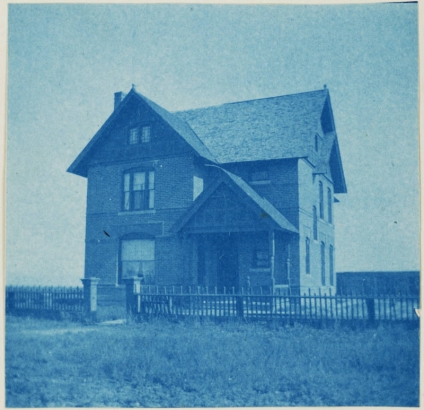


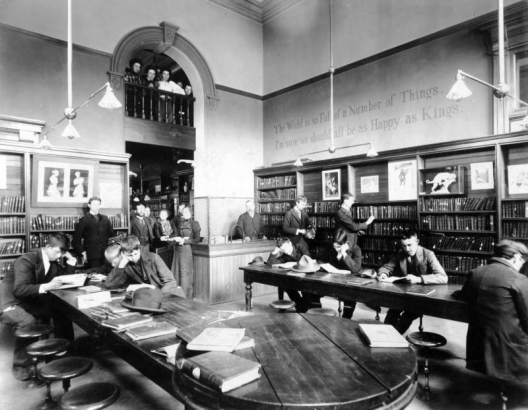

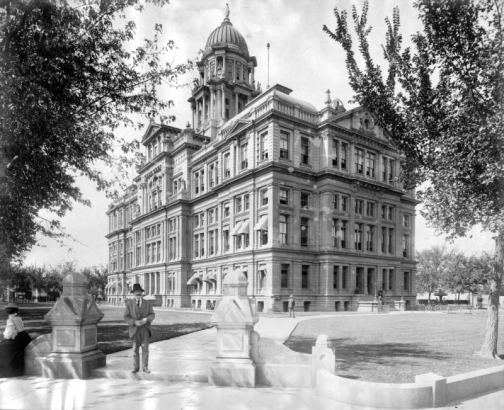

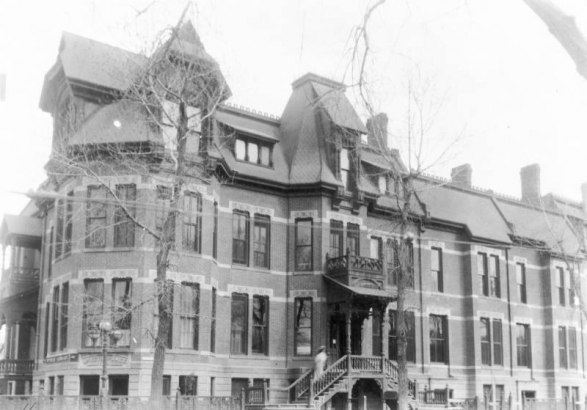
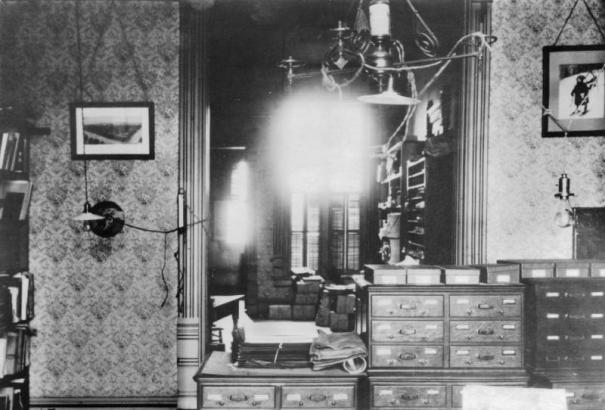

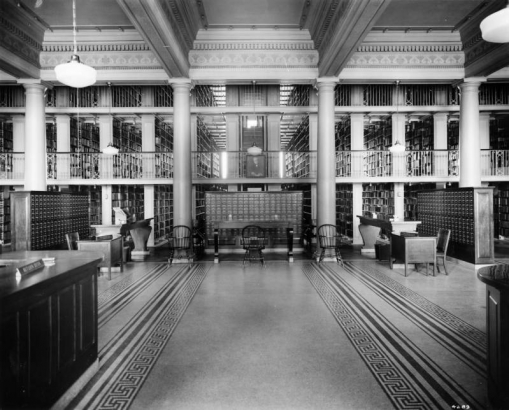

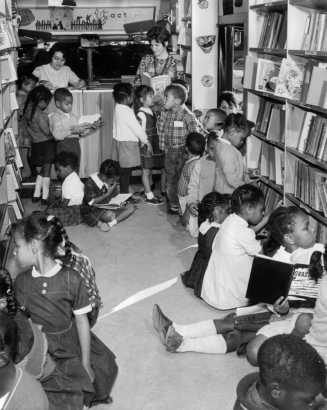
Comments
Great article and WONDERFUL
Great article and WONDERFUL photos! Thank you Katie.
Thank you so much, Thomas! It
Thank you so much, Thomas! It was fun to illustrate this article.
I’ve enjoyed all these
I’ve enjoyed all these historical stories so much. I’ve learned some things about Denver I hadn’t known,too. What a wonderful respite from Covid news.
Keep ‘me coming, please!
What a wonderful compliment,
What a wonderful compliment, Kathy! Thank you so much for reading.
What a lovely tribute to DPL!
What a lovely tribute to DPL! The smallpox episode, demonstrating library commitment to the greater good, is fascinating. And as for having bats, perhaps we should bring that back (https://www.smithsonianmag.com/travel/these-portuguese-libraries-are-infested-batsand-they-it-way-180969276/)!
Add new comment